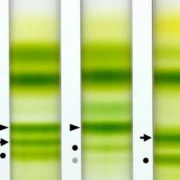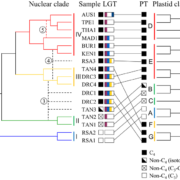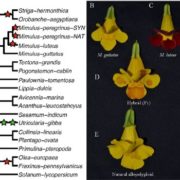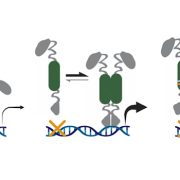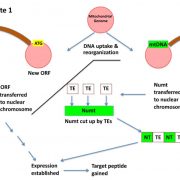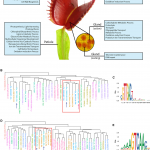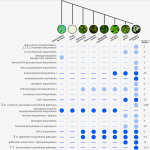Genomic evidence for convergent evolution of gene clusters for momilactone (PNAS)
 Plants produce a rich diversity of chemical compounds. In fungi, the genes encoding specialized biosynthetic pathways are frequently arranged in contiguous loci forming biosynthetic gene clusters (BGC). In plants, BGCs are not common, however, some cases have been found in angiosperms. Among the known plant BGCs, a cluster responsible for the biosynthesis of the diterpenes momilactones -a broad range growth inhibitor-, was found in various grasses species but not in other plants. Interestingly, the moss Calohypnum plumiforme also produces momilactone. In this paper, Mao et al. sequenced its genome and found that the putative genes responsible for momilactone biosynthesis are also arranged in a cluster. They analyzed the co-expression and enzymatic activity of candidate genes using heterologous expression, confirming it is a BCG. Studying the evolution of this gene cluster in land plant species, they concluded that the arrangements of cluster genes are different in mosses than in grasses and might have evolved independently. This is the first report of a BGC in a non-seed plant, suggesting that they could be a more widespread genomic phenomenon that appeared early in the evolution of land plants. The genome of C. plumiforme will also help to understand bryophytes evolution. (Summary by Facundo Romani @facundoromani) Proc. Natl. Acad. Sci. USA 10.1073/pnas.1914373117
Plants produce a rich diversity of chemical compounds. In fungi, the genes encoding specialized biosynthetic pathways are frequently arranged in contiguous loci forming biosynthetic gene clusters (BGC). In plants, BGCs are not common, however, some cases have been found in angiosperms. Among the known plant BGCs, a cluster responsible for the biosynthesis of the diterpenes momilactones -a broad range growth inhibitor-, was found in various grasses species but not in other plants. Interestingly, the moss Calohypnum plumiforme also produces momilactone. In this paper, Mao et al. sequenced its genome and found that the putative genes responsible for momilactone biosynthesis are also arranged in a cluster. They analyzed the co-expression and enzymatic activity of candidate genes using heterologous expression, confirming it is a BCG. Studying the evolution of this gene cluster in land plant species, they concluded that the arrangements of cluster genes are different in mosses than in grasses and might have evolved independently. This is the first report of a BGC in a non-seed plant, suggesting that they could be a more widespread genomic phenomenon that appeared early in the evolution of land plants. The genome of C. plumiforme will also help to understand bryophytes evolution. (Summary by Facundo Romani @facundoromani) Proc. Natl. Acad. Sci. USA 10.1073/pnas.1914373117


